- Rule the Waves 3: Still rules
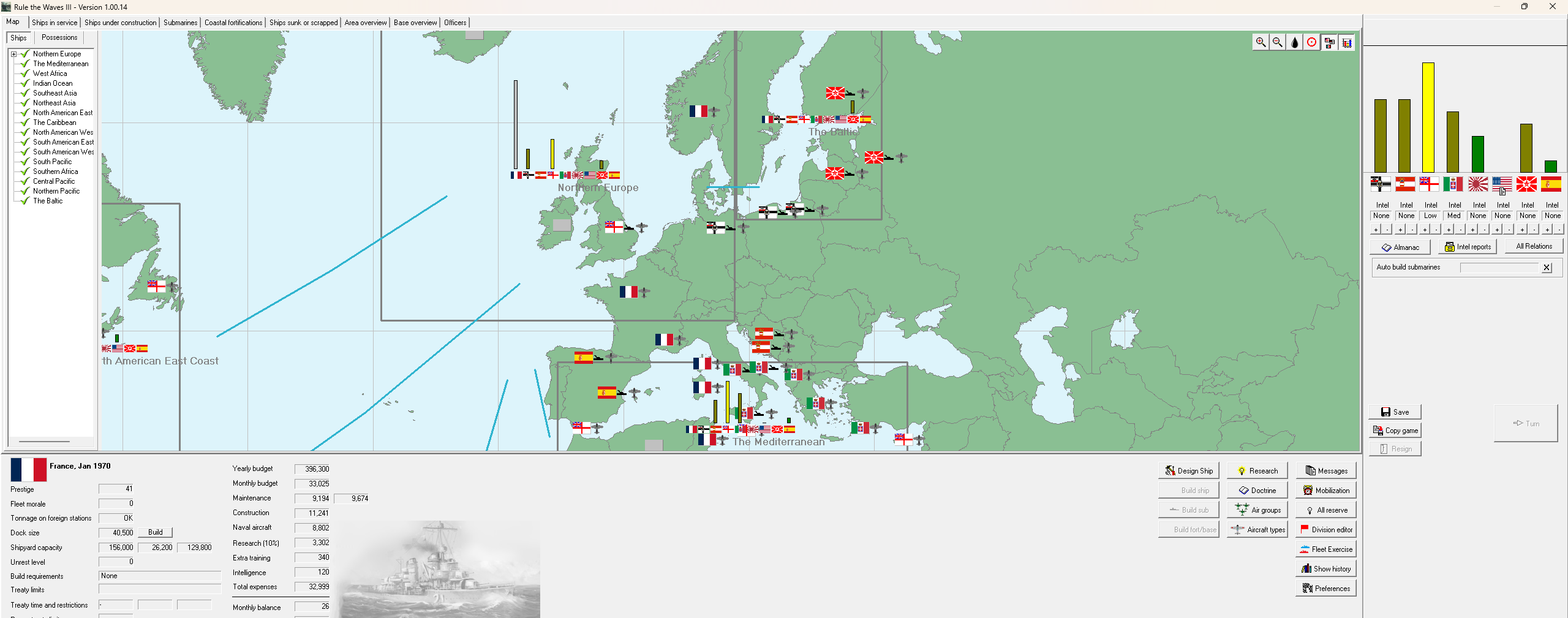
The highest praise I can give Rule the Waves 3 is that, for two weeks, it was the one game that I played alongside Zelda: Tears of the Kingdom.
The second-highest praise I can give is that it’s a brilliant depiction of strategy. Like its predecessors, Rule the Waves 3 puts the player in command of a navy — designing ships, building fleets, and commanding them in battle. This involves several trade-offs:
- Objectives vs resources — It’s the player’s job to design a fleet that can bridge the gap between the nation’s requirements and its available resources. These are very different for each country in the RTW series. For instance, the UK and France have to patrol large empires while fending off powerful enemies in Europe. Japan starts with a smaller industrial base but benefits from isolation. The US has a huge economy and is an ocean away from major threats. What force structure and doctrine are suitable for each?
- Current vs future capabilities — There is never enough money to go around. Building new ships takes time & money. Maintaining existing ships also costs money. When is it best to upgrade old ships? And when is it best to bite the bullet, scrap old ships, and put the money into new ships that won’t be ready for a few years?
Adding to this is the player’s position. While in-game events allow us to give advice, the government makes the big decisions: war & peace, naval funding, and naval treaties. Sometimes the government will also intervene in the details, by demanding X number of new battleships or destroyers. Regardless, when a war breaks out, the player has to get the job done.
This makes the RTW series almost unique in its focus on policy and force structure — an area I’d like to see more games explore.
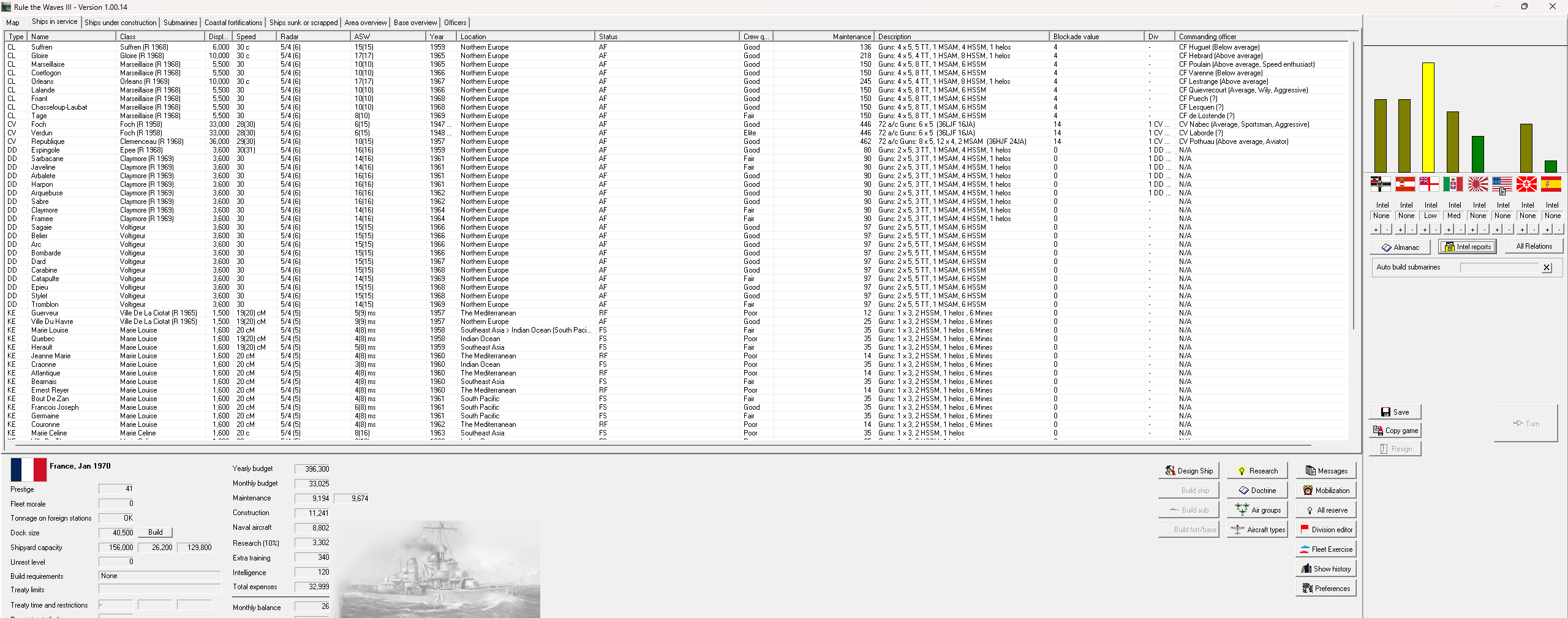
Whereas the previous RTW games covered shorter periods, Rule the Waves 3 extends the timeline to 1890-1970. Over this time, naval technology evolves through:
- The pre-dreadnought age (1890s-1900s)
- The age of dreadnought battleships and battlecruisers (1900s-1930s or 1940s)
- The carrier age (roughly 1930s-1950s)
- The jet & missile age (newly added, 1950s-1970)
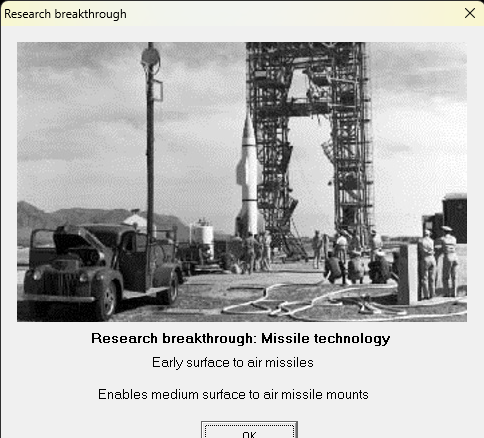
Over the course of a successful French campaign, I fought against, alongside, or sometimes both (at different times) the navies of Italy, Germany, Austria-Hungary, the UK, and the US.
Some wars were one-sided — on two occasions, Il Duce sued for peace almost as soon as the war began. Others were less so — I lost a two-ocean war in the North Sea & Mediterranean against Germany and Italy in 1914-1915. The “final boss” of the campaign was a Franco-US war against Italy and the UK in the early 1960s — I hung on by the skin of my teeth before the diplomats managed to negotiate peace on the status quo ante bellum.
Some of my ships became legends. The four Aquitaine-class battleships entered service in the early 1930s as battlecruisers, were redesignated as fast battleships in the 1940s, and periodically received the latest radar and fire control. They were murderously effective against German heavy cruisers as late as the 1950s, before finally meeting their match in the form of modern Anglo-Italian missiles and torpedoes in the 1960s. Two survived to the end of the game in 1970.
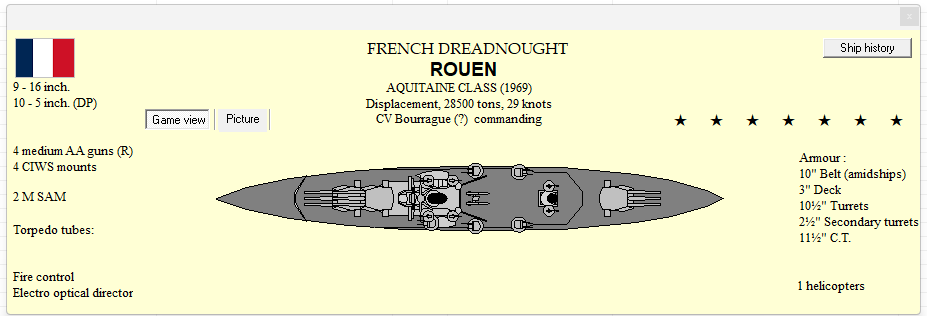
Other designs were less successful. At the other extreme, the guided missile age made my last big gun cruiser, the Gloire, obsolete while under construction. I hastily refitted her to incorporate surface-to-air missiles, only for the Italians to sink her in her first battle.
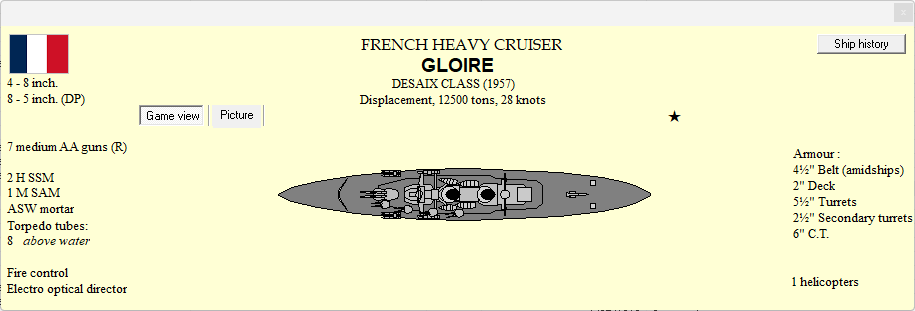
Like its predecessors, RTW3 won’t be for everyone. The interface is a little fiddly, the graphics are rudimentary, and there is no music. Players need to come armed with their imagination.
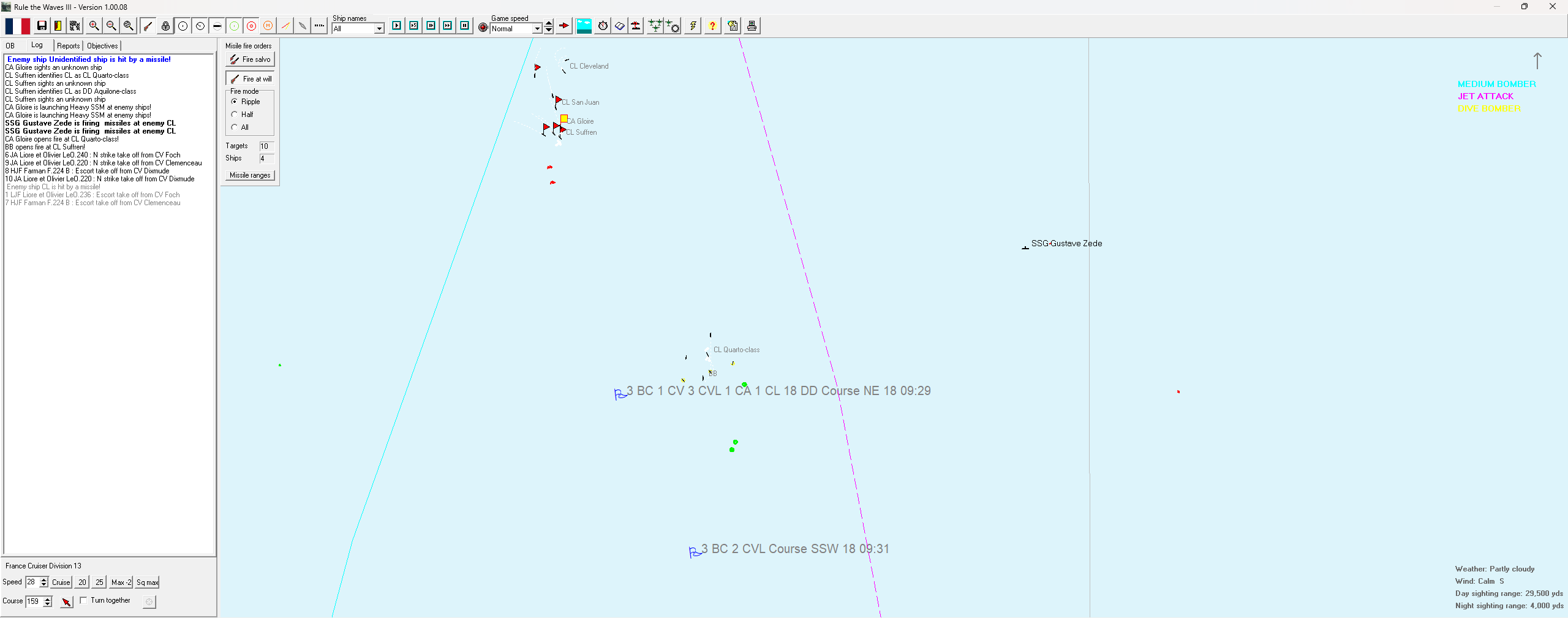
For players who don’t mind this, RTW3 offers rich rewards. I plan to try another campaign some time. After France, perhaps Japan might be an interesting change of pace…
Further reading
I wrote about Rule the Waves 2 in 2019 and Rule the Waves 1 all the way back in 2015.
Enjoying the site? Subscribe via email below.
